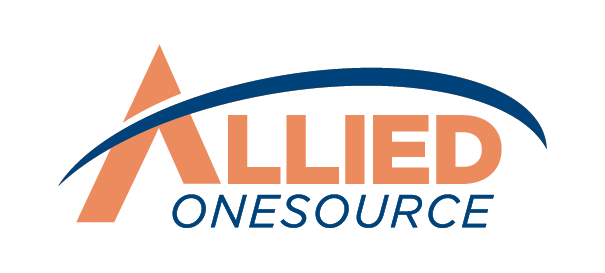Seasonal Hiring in Distribution: How to Keep Your Best Workers Year-Round
Many staffing firms spend thousands of dollars recruiting and training seasonal workers to handle their busiest periods. These workers learn systems, prove they can handle pressure, and help meet deadlines. Then January comes, and they're gone. Next peak season, the cycle starts over: posting jobs, screening candidates, and rebuilding a workforce from scratch.
The best candidates for permanent roles might already be working for you. The challenge isn't finding good workers but keeping them. Converting seasonal workers to permanent employees requires a system that identifies high performers during peak season, communicates opportunities early, and makes offers before they move on.
The Challenge: Why Most Seasonal Workers Don't Stay
The gap between seasonal hiring and year-round retention is how companies structure these roles from the start.
Employers Treat It as Temporary by Default
Most companies never mention permanent opportunities during onboarding because they've already decided these roles have an end date. Seasonal workers receive minimum training to complete immediate tasks, not the broader context that would help them understand the business.
They're excluded from team meetings and long-term planning discussions. This treatment sends a clear message: you're here to fill a gap, not to build a career.
Seasonal Workers Expect to Leave
When employers frame roles as temporary, workers plan accordingly. They start job hunting in November or December because they assume their paycheck stops in January. By the time you consider making an offer, they've already accepted another position.
There Is No Formal Process for Seasonal-to-Permanent Transitions
Most companiesdon't define what "good performance" looks like beyond basic productivity and attendance standards. Without clear criteria, managers can't identify conversion candidates consistently, and workers don't know what it takes to be considered for permanent placement.
Decisions happen reactively in January when operations slow down, not strategically during peak season when you can actually observe performance under pressure.
Peak Performers Go Unidentified
Managers are buried during peak season, focused on meeting daily targets. Tracking individual performance becomes impossible when you're just trying to keep operations running. By the time things settle down, and you think "we should have kept that person," they're already working somewhere else.
How to Build a Year-Round Seasonal Talent Pipeline
Fixing these problems doesn't require complicated systems or massive budget increases. In physically demanding industries like distribution and manufacturing, temporary worker turnover averages 419 percent, and each departure costs the equivalent of six to nine months of that worker's salary.¹
Reducing that turnover requires intentional communication, basic tracking, and timely decision-making. Here's how to retain warehouse workers and build a talent pipeline that reduces your recruitment costs every peak season.
Communicate Permanent Opportunities from Day One
Tell seasonal workers while onboarding that you hire permanent staff from your seasonal workforce. Set clear expectations about what it takes to be considered; attendance, safety compliance, quality of work, and attitude. Share success stories of workers who started seasonal and became permanent team members.
This simple conversation changes how workers approach their role and signals that strong performance leads to long-term opportunities.
Track Performance During Peak (Not After)
Identify clear performance indicators before peak season starts: attendance, safety compliance, adaptability when priorities shift, and initiative when problems arise. Create simple tracking systems like weekly manager notes or peer feedback about who team members prefer working with. Don't wait until January to figure out who was good, and by then, your best performers are gone.
Make Mid-Season Check-Ins a Priority
Schedule brief one-on-ones with strong performers during peak season. A simple "You're doing great work; would you be interested in staying on after the holidays?" plants the seed early and keeps top performers engaged through the end of the season. This conversation also helps you gauge who's interested before you invest time making formal offers.
Offer Retention Incentives That Matter
Provide completion bonuses for finishing the season strong, and tie those bonuses to conversion offers for permanent roles. Make sure permanent positions offer competitive pay; workers shouldn't feel like they're taking a pay cut after peak season ends.
Consider flexible scheduling options for workers who want reduced hours after the rush, which allows you to retain talent even if they can't commit to full-time work.
Extend Offers Before the Season Ends
Don't wait until January to make permanent offers. Extend offers in mid-December when workers are still engaged and haven't secured other positions yet. Top performers will have multiple opportunities, so moving quickly matters. For strong performers who aren't ready to commit immediately, maintain a "reserve list" for future openings or next peak season.
Stay Connected to Workers Who Don’t Convert Immediately
Not everyone can commit to permanent work right away, but that doesn't mean they're gone forever. Send occasional check-ins when new positions open up and offer priority consideration for workers who performed well during previous seasons.
Consider referral bonuses for former seasonal workers who recommend other quality candidates. Workers who return year after year already know your operation and require minimal training, making them valuable hires even if they can't stay on permanently after their first season.
Stop Rebuilding Your Workforce from Scratch Every Peak Season
Allied OneSource helps employers design staffing strategies that turn seasonal surges into long-term retention opportunities. We work with you to identify high performers during peak periods, create structured conversion pathways, and maintain talent pools that reduce your recruitment costs year after year.
Whether you need 50 seasonal workers or 500, we help you build a workforce strategy that doesn't reset to zero every season. Ready to keep your best seasonal workers year-round? Contact us today to discuss how we can build a retention-focused staffing strategy that works for your operation.
Reference
1. Jones, Jennifer. “Keeping the Season Merry: Cracking the Code to Seasonal Workforce Retention.” Industrial Safety & Hygiene News, 21 Dec. 2023, https://www.ishn.com/articles/114012-keeping-the-season-merry-cracking-the-code-to-seasonal-workforce-retention.











